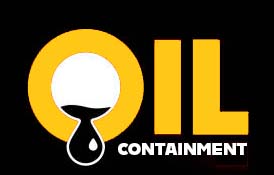Containment barriers play a critical role in the oil industry, especially when it comes to preventing leaks and spills that can have serious environmental consequences. Secondary containment researchers are constantly looking for ways to improve these barriers and ensure they are as effective as possible. One material that has been gaining popularity in the industry is polyurea, known for its durability and flexibility. In this article, we will discuss how to properly create containment barriers in the oil industry, focusing on the use of polyurea and best practices for ensuring their effectiveness.
Understanding the Importance of Containment Barriers
Before diving into the specifics of creating containment barriers, it is important to understand why they are so crucial in the oil industry. Containment barriers act as a second line of defense, providing an extra layer of protection in case of a primary containment failure. They help to contain spills and leaks, preventing them from spreading and causing further damage to the environment.
Additionally, containment barriers are often required by regulations to ensure that oil storage facilities are in compliance with safety standards. Failing to have proper containment barriers in place can result in hefty fines and reputational damage for companies in the oil industry.
Choosing the Right Material
When it comes to creating containment barriers, the material used plays a significant role in their effectiveness. Polyurea has become a popular choice in the industry due to its ability to provide a seamless and durable barrier. Unlike some traditional materials, polyurea is resistant to chemicals and can withstand harsh environmental conditions, making it an ideal choice for oil storage facilities.
Best Practices for Creating Containment Barriers
-
Proper Surface Preparation: Before applying polyurea or any other material, it is crucial to ensure that the surface is properly prepared. This includes cleaning the surface and removing any debris or contaminants that could affect the adhesion of the containment barrier.
-
Application Techniques: When applying polyurea, it is essential to follow the manufacturer’s guidelines for mixing and application. Improper application can lead to weak spots in the barrier, compromising its effectiveness.
-
Regular Maintenance: To ensure that containment barriers remain effective over time, regular maintenance is necessary. This includes inspecting the barrier for signs of damage or wear and making any necessary repairs promptly.
-
Monitoring and Testing: In addition to regular maintenance, it is essential to monitor and test containment barriers periodically to ensure they are functioning as intended. This can involve conducting leak tests and inspections to identify any potential issues before they escalate.
Conclusion
Creating effective containment barriers in the oil industry is essential for protecting the environment and ensuring compliance with regulations. By using materials like polyurea and following best practices for installation and maintenance, secondary containment researchers can help to prevent leaks and spills that could have serious consequences. With proper planning and attention to detail, containment barriers can provide an additional layer of protection for oil storage facilities, mitigating the risks associated with storing and handling hazardous materials.
